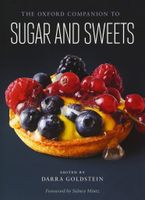Advertisement
Splenda and Doubts about Artificial Sweeteners’ Healthfulness
Appears in
Published 2015
Introduced in 1999, Splenda, the brand name for sucralose, is the latest artificial sweetener on the market, and it is now the most frequently consumed. Splenda’s ability to withstand heat enabled it to serve as a replacement for sugar not only in prepared foods and beverages but also in home baking. Its sugarlike taste and flexibility, combined with an early campaign message that it was “made from sugar, so it tastes like sugar,” encouraged consumers to make the switch from NutraSweet. One study in the mid-2000s found that while Splenda sales rose 90 percent in a single year, sales for saccharin and NutraSweet dropped 12 percent and 90 percent, respectively. Consumers may also have been motivated by a low-level yet persistent unease about NutraSweet’s health effects. For the small percentage of consumers who suffer from phenalynine syndrome, aspartame consumption can be life threatening. Moreover, in websites and books, and through word of mouth, formerNutraSweet users had since the 1990s complained that their headaches, seizures, and memory loss came as a result of consuming large quantities of aspartame. Splenda likely benefited from these rumblings, but unease about all artificial sweeteners remains. Recent marketing studies find over half of Americans who use artificial sweeteners are concerned about these products’ safety. Add to this recent studies suggesting that artificial sweetener use, over time, may lead more often to weight gain then weight loss, and space for a new alternative appears.


